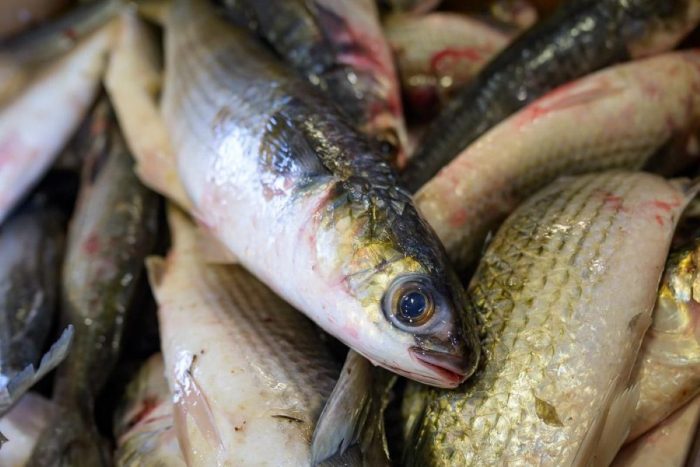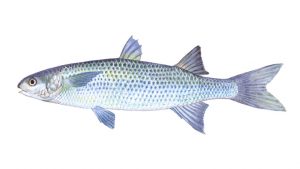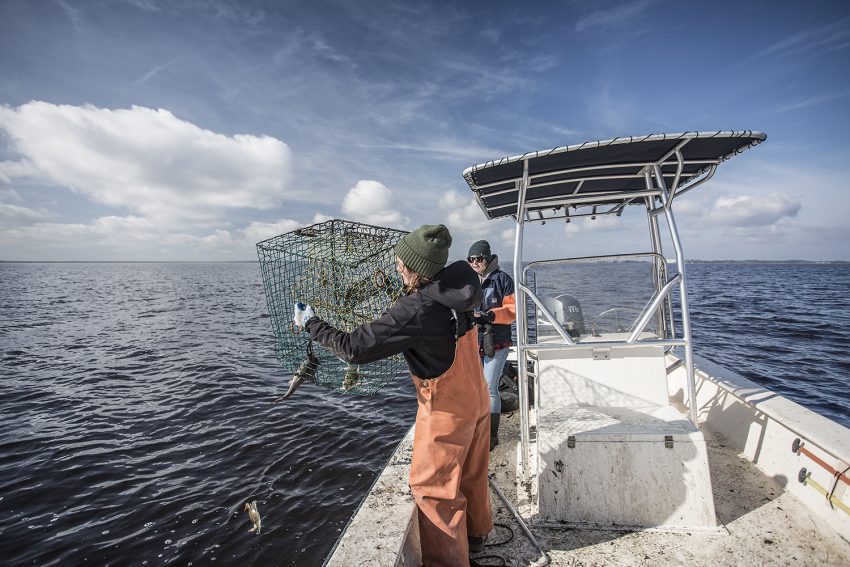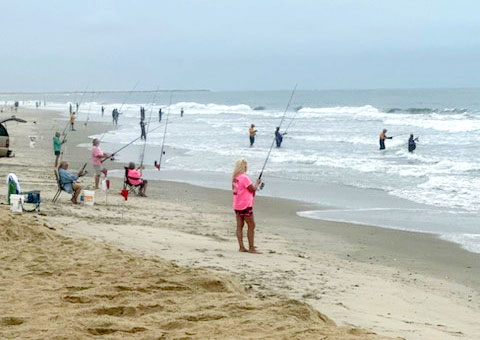Public comment held on proposed mullet fishery regulation

The Department of Environmental Quality is adding restrictions to mullet harvest after it found the stock is overfished.
In a contentious meeting on Thursday, January 18, the Northern Regional Advisory Committee recommended weekend closures on commercial striped mullet harvest, including stop net harvesting, with a six to one vote. The advisory committee abstained from voting for recommendations on recreational restrictions for mullet or adaptive management framework for the fishery.
Commercial fishermen, charter fishermen, and tackle shop owners expressed concerns, including economic impact and stock assessment inaccuracies, about mullet regulations during the public comment section of the meeting.
Following stock assessments of striped mullet ending in 2019, the Department of Marine Fisheries determined striped mullet are overfished and overfishing occurred in 2019, according to the Striped Mullet Fishery Management Plan Amendment 2.
Overfishing occurs when fishermen harvest too many fish from the population. Continued overfishing creates a population small enough to be considered overfished.
Steve House, a member of the Dare County Board of Commissioners, began public comment. The economic impact study in the Striped Mullet Fishery Management Plan does not meet the standards of the North Carolina Fisheries Reform Act of 1997, because it does not calculate the amount of money fishermen will lose through these regulations, he said.
“An economic impact statement is not just two pages that says you’re going to catch less so you’re going to make less money,” House said.
House also raised issues with the four-year-old stock assessment data on which the DMF’s recommendations are based and encouraged the DMF to update its data.
“There’s no way this government, in any form, can work off data that’s four years old,” he said.
The DMF recommended a 33 percent reduction in striped mullet removals to rebuild the species spawning stock to a sustainable level and end overfishing in two years, according to the Department of Environmental Quality website.
Commercial fishermen reported an abundance of mullet during public comment. To illustrate this, Reese Stecher, a charter fisherman who runs out of Oregon Inlet with 27 years of experience, brought up a 76,000-pound single catch of mullet using a stop net in November 2023.

Michael Langowski, who lives in Frisco and has fished for mullet commercially for 60 years, has seen more finger mullet in the last ten years than in the previous 50 years, he said during public comment.
“You’ve taken away the red drum fishery,” said Langowski, who began commercial fishing when he was 12 years old. “You’re getting ready to take away the speckled trout fishery. Now the low-life mullet.”
The DEQ manages fisheries for 13 species of fish and shellfish. Although not all are considered overfished, the DMF and the Marine Fisheries Commission work within the DEQ to monitor fisheries and regulate stock harvests through fishery management plans.
“We almost don’t have any fish left in the sound that aren’t listed as overfished,” Stecher said.
The DMF collected stock assessment data through the North Carolina Trip Ticket Program, created in 1994 which requires commercial fishermen to report their catch and gear used to a licensed seafood dealer, and the Marine Recreational Information Program, which uses surveys and interviews with fishermen to estimate recreational landings.
Recreational mullet harvest accounted for one to two percent of the mullet harvest in 2019, but the data is “imprecise,” said Jeff Dobbs, a biologist at the MFC. The DMF does not have all the data on the amount of mullet commercial fishermen harvested and sold to recreational fishermen through tackle shops or the amount of mullet recreational fishermen harvest.
The DMF also performs independent sampling programs using gill and trawl nets to study species abundance over time, according to the DEQ website.
The DMF outlined several options to reduce commercial striped mullet harvest, including size limits, season closures, trip limits, day-of-the-week closures, and seasonal catch limits, according to the mullet decision document.
The Northern Advisory Committee did not vote to approve the DMF’s recommended fishery restrictions.
In the Amendment 2 draft, the DMF recommended a 50-pound daily trip limit for January, a 500-pound daily trip limit from Feb. 1 to Oct. 15, no daily trip limit for roe season from Oct. 16 to Nov. 15, a 50-pound daily trip limit from Nov. 16 to the end of the year, and a 50-pound daily trip limit on Saturdays and Sundays throughout the year.
In addition, the DMF recommended a 30,000-pound season limit on stop net fishing, a technique using a boat to set a strike net and a set net and then pulling the net into the beach with a truck or tractor, a 50-bag limit for recreational fisherman, a daily limit equal to the numbers of anglers licensed to carry on for-hire vessels, and adaptive measures to achieve sustainable harvest if the approved measures aren’t achieving their goal, the Island Free Press reported.
Currently, there is no size limit on mullet for recreational or commercial fishermen, but recreational fishermen are held to a 200 mullet daily possession limit.
Virginia and South Carolina haven’t shut down their mullet fisheries, Stecher said.
“Why is it that mullet aren’t endangered in Virginia or South Carolina, but they are here?” Stecher asked after the meeting.
The DEQ adopted a temporary amendment closing the mullet fishing season north of the Highway 58 Bridge from Nov. 7, 2023, to Dec. 31, 2023, to address overfishing while working on a permanent amendment to address the issue.
Overwhelmingly, commercial fishermen harvest more mullet, but the temporary amendment also banned mullet possession, which affected recreational fishermen because mullet is a popular bait.
Dave Warren, who’s fished for mullet from North Carolina to Florida since the 1990s, remembers mullet selling for more than three dollars a pound. This year, mullet sold for one dollar per pound at its highest price.
“I’m not going for mullet, because it’s not as lucrative,” Warren said.
The Southern Regional Advisory Committee voted to recommend all the DMF’s decision document recommendations on Jan. 10, while the Finfish Advisory Committee voted to recommend a weekend closure for the fishery and the adaptive management framework on Jan. 16, Dobbs said.
The adaptive management framework would allow the MFC to adjust season closures, day of the week closures, trip limits, and gill net and mesh size restrictions if the approved measures are not creating a sustainable mullet harvest or relax restrictions if the mullet management targets are met, according to the decision document.
Jonathan Worthington, a member of the advisory board, didn’t want to vote on recreational restrictions or adaptive management framework, because of the DMF’s incomplete data.
“I just find it hard to vote when the rules haven’t even been followed,” Worthington said.
Without the adaptive management framework, the MFC will have to reopen the fisheries management plan for mullet and repeat the amendment process, which takes around two years, Dobbs said.
The process starts with a scoping document before drafting a fishery management plan. The Advisories Committees are formed to provide input for the plan. The MFC reviews the plan and approves it for public comment, which happened on Thursday.
After public comment, MFC will select its preferred management options before the DEQ will review the draft. The final adoption of the fishery management plan will take place in May, and the timeline for implementing the regulations will be determined after the plan is adopted, according to the decision document.
Once DEQ restricts a fishery, it does not ease restrictions for fishermen, said John Machie, a commercial fisherman from Manns Harbor.
“This is just the first step. I know it,” he said.







